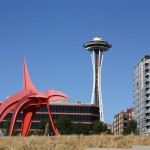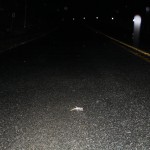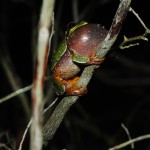Salamanders and…Seattle?
FINDING ANSWERS TO NJ PROBLEMS AT ICOET
By MacKenzie Hall, Private Lands Biologist

Last week – literally moments before Irene began her Garden State smack-down – my plane landed on home ground. I was returning from six days in Seattle, WA, where more than 550 professionals from 21 countries gathered for the International Conference on Ecology & Transportation (ICOET). The conference offered over 170 combined talks and posters on a variety of research, planning, ecology, and engineering topics that, by and large, had to do with animals crossing roads.
The reason I made the trip was our Amphibian Crossing project (ok, and it was also Seattle, birthplace of the counter-culture that fashioned my grungy teenagehood!). Over the last decade we’ve surveyed, mapped, and prioritized hotspots throughout the northern half of NJ where frogs and salamanders have to travel across roads to reach their breeding pools each spring. Enormous numbers are killed in doing so. The hallmark of our Amphibian Crossing project has always been the volunteer-based rescue surveys – at night, in the rain, in traffic; requiring a lot of hands and a maniacal level of commitment to plan and carry out year after year. At this point, we’ve got around 35 “high” and “highest” priority crossings…far too many to manually protect in the short-term, not to mention the long-term. Our long-term solution is to get special under-road culverts installed for these migrating amphibians, and ICOET was a place I could find folks who have done it. Continue reading “Salamanders and…Seattle?”



